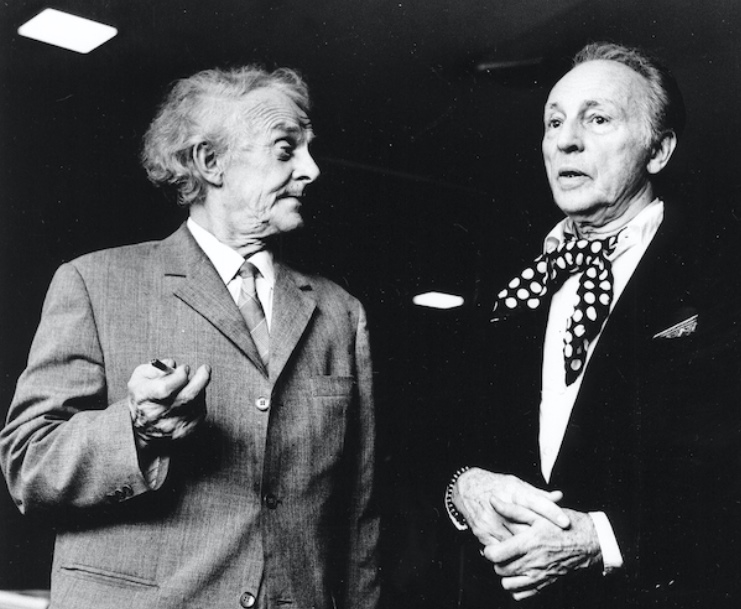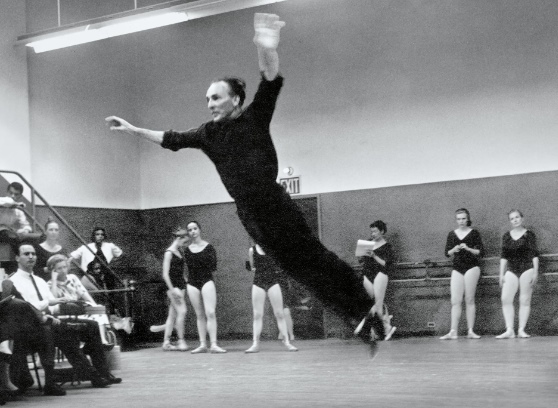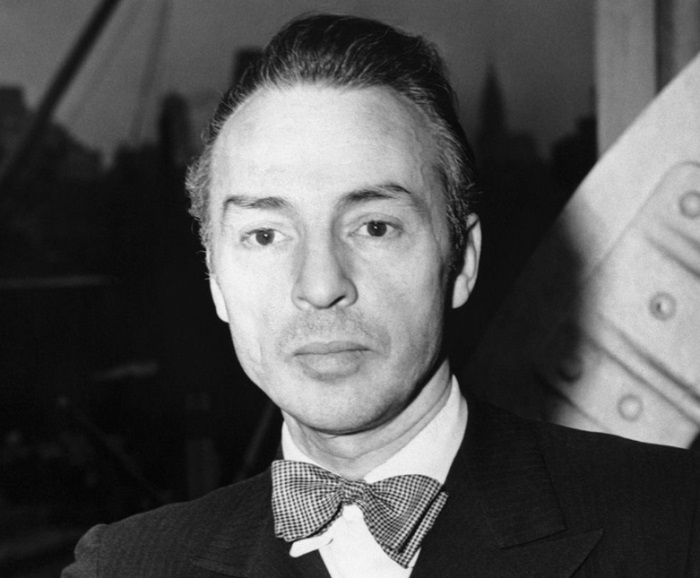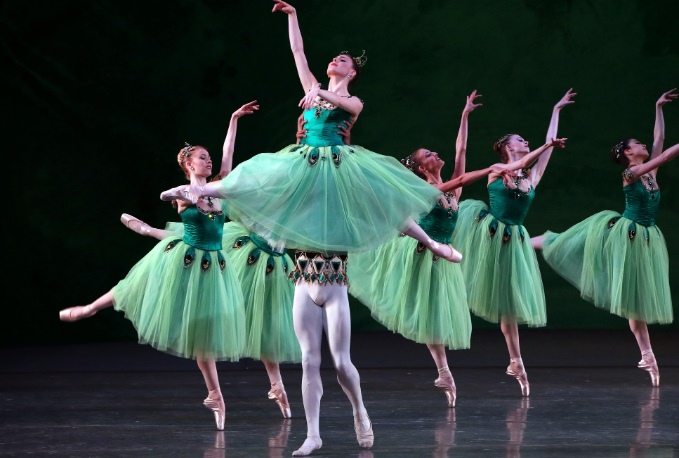Born in Russia and spending most of his time in the United States, George Balanchine is undeniably the choreographer with the most influence on American ballet.
His legacy was grand and hardly transcended. Today, we will take a deeper look into the events that made him who he was as well as directly contributed to his style in ballet and the arts in general.
Table of Contents
George Balanchine Family
One could say Balanchine was born with music in his veins as his father was Meliton Balanchivadze, an opera composer and singer, also a co-founder of a theater and later the minister of culture in the short-lived Georgia.
Balanchine’s mother, Maria Nikolayevna Vasilyeva, had so little information about her family disclosed. Records pointed out that she had an affection for the ballet to a great extent and could play the piano, but rumors said she was Meliton’s housekeeper before they formed a bond.
It was hard to discuss whether his mother truly had an educated and cultural background or not by looking at Balanchine and his ability at the piano, since his father was certainly talented in this aspect too.
Balanchine had three siblings. Andrei Balanchivadze, who followed their father’s path and became a composer, was one of them.

George Balanchine Spouse
As he was a ladies’ man, there was more than one woman to be called George Balanchine’s wife.
At 19 years old, he got married to Tamara Geva, a fellow dancer three years younger than him. Their relationship was short-lived, and Balanchine was seeing another ballerina, Alexandra Danilova, the very next year.

However, during the 7 years when Balanchine lived as a spouse with Danilova, Geva was still his official wife by law. He explained to Danilova that he didn’t have his marriage papers in his possession, hence a legal divorce might be quite difficult.
Afterward, he had three more marriages, all with his dancers: Vera Zorina (until 1946), Maria Tallchief (until 1952), and Tanaquil LeClercq (until 1969).
None of his relationships ended up giving him an offspring.
George Balanchine’s Early Years
When Balanchine was a child, he wasn’t overly enthusiastic about ballet. His sister Tamara, on the other hand, shared that passion with their mother, who insisted he join her in classes and auditions.
At 9 years old, Balanchine was enrolled in the Imperial Ballet School in Saint Petersburg. His instructors here were the Premier Danseur Noble Pavel Gerdt and his son-in-law Samuil Andrianov.
During World War I, Balanchine stayed with the Mariinsky Theater until it was forced to shut down in 1917 and turned into the state’s property. When the theater opened again one year later, he started to experiment with new ballets.
Following his graduation in 1921, Balanchine was accepted into the Petrograd Conservatory and simultaneously worked at the State Academic Theater for Opera and Ballet. His program here included music theory, composition, advanced piano, and the like.
Ever since Balanchine was a teenager, he attempted to choreograph his performances and persisted despite the directors not approving of or showing interest in his works.
The passion was transferred to his teaching days at Mariinsky. After meeting Tamara Geva, he formed The Young Ballet with her and a few other dancers.
The Way To Become A Professional Choreographer
Ballet Russes
At the age of 20, Balanchine and The Young Ballet had the chance to go on a European tour for the first time. However, it was far from what the young dancers had previously imagined.
They couldn’t go down well with Berlin’s audience and had to take their chance in small towns. There was no grand theater, only dark small places, beer gardens, or private ballrooms. They had to get by with meals of only tea at times and hotels were a luxury they couldn’t afford.
The situation didn’t get any better after they arrived in London, and their visas were expiring.
The last chance they had was Paris because there was a rather thriving community of Russians, though no one could have foreseen Sergei Diaghilev offering a choreographer position to Balanchine.
Only 21 years old, Balanchine stood in the position of the main choreographer for Ballets Russes, the most well-known company in Paris back then. Diaghilev appreciated Balanchine’s creations and encouraged him with the ballet master’s promotion.
In the 1924 – 1929 era, Balanchine had 10 ballets and many minor pieces. He frequently worked with top-notch composers and designers, so his works always consisted of the art forms that he valued.
One of Balanchine’s most innovative works was Apollon musagète, a ballet inspired by Greek myth and jazz moves. It put the male dancer in the spotlight, promoted minimalism in sets and clothes, and emphasized the importance of music in choreography.
The Ballet Russes was forced to end after Diaghilev passed on, and Balanchine continued to choreograph for variety shows until the Royal Danish Ballet recruited him as a guest master.
In 1931, the successor of the Ballets Russes was established, and Balanchine and Leonide Massine became its choreographers.
With the impression that Massine’s works were more favorited by the crowd, one of the co-founders singlehandedly decided to fire Balanchine along with Boris Kochno and Tamara Toumanova.
Kochno and Balanchine joined hands and formed “Les Ballets 1933”, which didn’t last longer than a few months because of the difficulties caused by the Great Depression. During this dark time, Balanchine still came up with new creations in collaboration with other composers and designers.

Check more: Enrico Cecchetti Biography – An Icon Of Male Ballet Dancing
In America
Balanchine opened the School of American Ballet with Lincoln Kirstein and Edward Warburg. His vision was to incorporate his unique style along with classical training for techniques in young dancers.
Besides his activities in ballet, Balanchine also challenged himself with Broadway musicals written and composed by the most notable names of the time.
He was the first individual with a choreography billing from Broadway instead of the usual dance billing.
Relocation
In 1938, George Balanchine and his company moved to Hollywood, where he choreographed for five Hollywood movies and met his second wife, Vera Zorina.
Under the name of the American Ballet Caravan, Balanchine toured from North to South America. World War II forcibly folded the company, and Balanchine once again worked as a choreographer for his old pounds – Blum and Massine.
Back to New York
Once again, Lincoln Kirstein generously helped Balanchine open the Ballet Society. He continued to commission scores from renowned composers and ventured into abstract ballets, some of which were immensely successful.
1954 marked a life-changing event for Balanchine as he recreated The Nutcracker and turned it into part of the American Christmas tradition.
Aside from this ballet, he also staged and produced several famous pieces such as Allegro Brilliante, Firebird, The Seven Deadly Sins, and more.
The outstanding musicality of Balanchine started to show during this phase of his career and reached its peak with Jewels, a plotless abstract ballet that carried the strong influence of its choreographer and opened up a path for his later works.
George Balanchine’s Famous Work
George Balanchine is acknowledged and credited with 465 ballets and choreographed stages.
His first significant success was Apollo (1928), which he considered had changed his life.
After he moved to America, his first creation was Serenade. Under Balanchine’s hand, the techniques became the servant for a pure dance, not clouded by extravagant sets or a heavy storyline.
The peak of Balanchine’s career was undeniably The Nutcracker, the first full-length production that New York had ever witnessed. Nowadays, it has become a valuable part of Christmas traditions, even made into different versions for TV and cinema.
As both a choreographer and an artistic director, Balanchine’s impact on a production was always prominent, whether he choreographed a certain part or most of the piece.
More of his notable works might be listed as Firebird (1949), La Valse (1951), Allegro Brilliante (1956), The Seven Deadly Sins (1958), A Midsummer Night’s Dream (1962), and Who Cares? (1970).
His latest credits were all in 1982, specifically Élégie and Noah & the Flood.
George Balanchine’s Awards
Reputation comes with recognition, and Balanchine’s achievements in America eventually brought him many awards.
He was the first choreographer to earn a position in Hollywood’s Entertainment Hall of Fame in 1975. Also this year, France honored him with the French Légion d’Honneur, one of the most respected honors for both civilians and soldiers.
Three years later, he and four other recipients were honored with the Kennedy Center Honors and a Knighthood, First Class in Denmark.
In 1983, during absentia, Balanchine received another major award: The Presidential Medal of Freedom.
Posthumously, he was still highly acclaimed for his contributions and talents. He was inducted into the Hall of Fame of the National Museum of Dance as well as the American Theater.
George Balanchine’s Death
During the last stage of his life, George Balanchine had to live with angina pectoris. He had coronary artery bypass surgery, a treatment for the plaques built up in the arteries, which can soothe chest pain and prolong one’s life expectancy.
However, as you might know, some procedures are not meant to cure a disease completely.
In 1978, the symptoms first showed in Balanchine as he stumbled and failed to maintain balance while dancing. Not only his equilibrium, but his eyesight and hearing also worsened with time. Within 4 years, he became incapacitated.
He passed away on April 30th, 1983, at the age of 79, while the company proceeded with the schedule.
After his death, he was diagnosed with Creutzfeldt-Jakob, a fatal brain disorder responsible for visual disturbances, poor coordination, changes in behavior, and memory problems.
Many writers who always acclaimed Balanchine’s contribution to ballet expressed their deep sorrow for the loss of a colossal name and an interesting vision that many generations did and will continue looking up to.
George Balanchine is remembered with a funeral in the Russian Orthodox fashion and interred at the Oakland Cemetery, New York. His legacy is phenomenal, with credits for 465 ballets. The Nutcracker is arguably the most notable production under his name.
Today, you can find George Balanchine Way in New York, between Broadway and Columbus Avenue.
Interesting Facts About George Balanchine
In George Balanchine’s life, there are many fun details that you might miss out on if you skim a page too quickly.
- His knowledge of music surpassed many of his colleagues because his father was a composer. Aside from ballet, Balanchine used to learn piano and study musical composition and theory.
- Balanchine wasn’t successful with his attempts at business, which many people playfully (or not) blamed his father’s musical ability for.
- Playing the piano in silent movie houses and cabarets sustained Balanchine’s life through the Russian Revolution. Money was worthless then, hence he got paid with food and drink.
- Balanchine thought folk dance could share the same roots with many other dance styles, including ballet.
- Jewels, despite its part being performed separately, is the first abstract ballet of full length and one of Balanchine’s first plotless works.
- Rumored to be quite a lady killer, Balanchine gifted different perfumes to his various ladies, just so he could tell them apart.
- Alongside several dancers and choreographers, he contributed some recipes to The Ballet Cook Book (1966). The dishes he introduced included beet borschok, “banana sweet”, and “fish dinner for two”.
- His love for America was deep. He never missed an election, enjoyed TV commercials, and frequently wore clothes with trendy phrases to practice.
- His name was given to Mercury’s crater.
- The style he followed his entire life and shaped young dancers into is now professionally addressed as the Balanchine Technique: speed, abstract movements, distinctive postures, and athleticism.
Final Words
With everything he achieved and devoted, George Balanchine lived up to his title as “The Father of American Ballet” and placed the most stable foundation stones for ballet in America.
Effortlessly combining modern and classical styles with distinctive minimalistic aesthetics, he paved the way for neat costumes, quick-paced movements, and plotless ballets – all of which will be valuable materials for the next generations of dancers.

